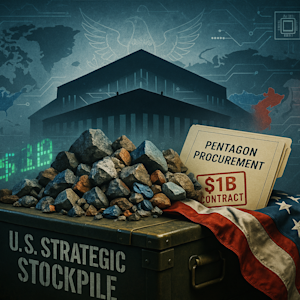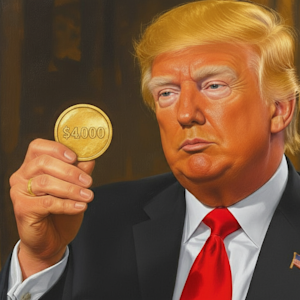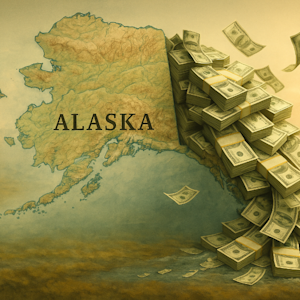The Day Trump Confiscates Gold
![]() Gold: The Currency of Terrorists?
Gold: The Currency of Terrorists?
 Don’t overreact to the subject line of today’s edition. It’s not a prediction. More like a thought experiment.
Don’t overreact to the subject line of today’s edition. It’s not a prediction. More like a thought experiment.
And don’t get the wrong idea. At no time do I anticipate Donald Trump will dispatch jackbooted government thugs, going door-to-door to seize any gold you might have stashed at home.
But I wouldn’t rule out the possibility of him taking an equally fateful step — one that could cut significantly into the gold gains you’ve accumulated so far, and the gains you’ll accumulate in the future.
The thought crossed my mind when I saw a Bloomberg story published a few days ago.
And then my mind immediately ran to events of more than a decade ago…
 Rewind to June 2014: The head-chopping jihadis from ISIS — or Islamic State, or whatever you want to call it — were large and in charge.
Rewind to June 2014: The head-chopping jihadis from ISIS — or Islamic State, or whatever you want to call it — were large and in charge.
They’d taken over a large swath of western Iraq and eastern Syria — and were in the process of setting up what looked like a functioning honest-to-God nation-state. Law enforcement, education, healthcare — ISIS had spun up ministries for all of them, funded by oil sold on the black market.
By November of that year, ISIS declared the creation of a currency — a gold-backed currency, no less. Its aim, in the words of an official ISIS statement, was to get out from under the “tyrannical financial system imposed on Muslims.”
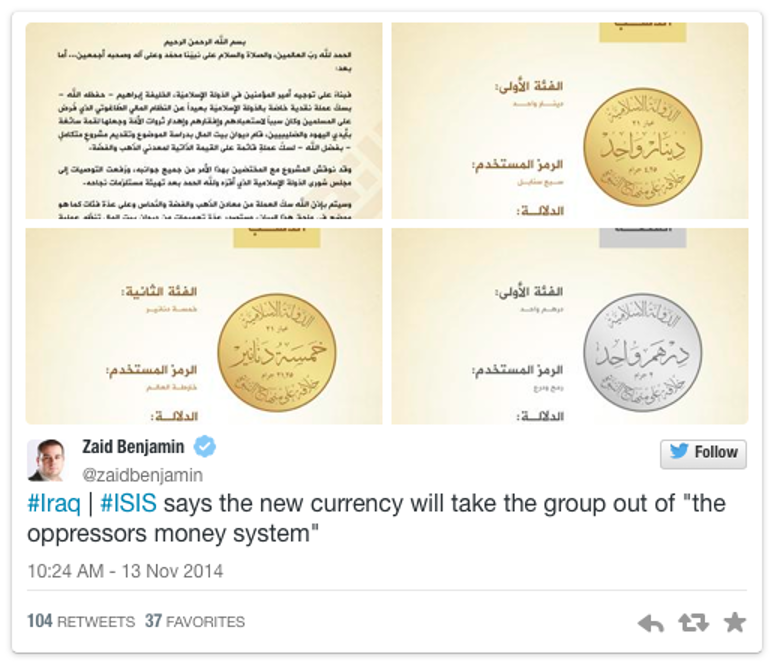
The plan was that the ISIS gold dinar would consist of 4.25 grams of 21-carat gold — worth about $139 at that time.
In the eyes of Western elites, none of this reflected well on gold — and it definitely didn’t reflect well on the minority of people who considered gold as a worthwhile asset class. The government could have easily painted gold ownership as un-American.
Or as I mused at the time… “If ISIS adopts a gold currency, does that make gold owners terrorist sympathizers?”
But my concerns were entirely hypothetical. No one in the government noticed or cared then. Gold was trading under $1,200, having collapsed from a record $1,900 three years earlier. Over time, ISIS’ stature regressed — no longer a nation-state, it was once again an insurgent group.
And now?
![]() The Day Trump Confiscates Gold
The Day Trump Confiscates Gold
 Fast-forward to the present. The gold price sits at a record high… and the new boogeyman for Western elites is China.
Fast-forward to the present. The gold price sits at a record high… and the new boogeyman for Western elites is China.
Which brings us to this Bloomberg story filed a few days ago…

Yeah… You see where I’m going with this?
➢ Reality check: China’s gold stockpile is likely much larger than official figures show. Paradigm’s macroeconomics maven Jim Rickards has said as much for over a decade. The total might be double what the People’s Bank of China publicly discloses, but still smaller than that of the United States’. At least for now…
Gold “allows China to offer up an alternative to U.S. financial dominance as Washington cranks up the use of sanctions and alienates even long-standing trade partners,” the article continues.
Beijing has closely observed the experience of Russia — and not just since 2022, when Washington froze the Russian central bank’s dollar-based assets after Russia’s invasion of Ukraine.
Moscow stepped up its accumulation of gold after an earlier round of sanctions in 2014, when Russia annexed the Crimean Peninsula. “Gold has allowed Moscow to navigate the freezing of foreign reserves held outside the country, an unprecedented move by Western governments,” the article points out.
 The linchpin of China’s plan is to offer gold storage to other central banks at the Shanghai Gold Exchange — instead of in New York or London.
The linchpin of China’s plan is to offer gold storage to other central banks at the Shanghai Gold Exchange — instead of in New York or London.
“China’s sales pitch here,” says Bloomberg, “will be appealing to the growing desire for a non-Western political and economic system which sanctions cannot reach — a custodian for nations like those in BRICS, a group that went from an investment thesis to a real-world club and now accounts for 40% of the world’s economy.
“Few of China’s allies will need a reminder that a stash of Venezuelan gold has been held, frozen, in the Bank of England for years.”
Ambitious, to be sure. And it will take time. But many experts think it’s doable. “China is talking about alternative payment with a new level of confidence,” says John Kennedy, author of a RAND Corp. report on the subject. “Gold is a key part of that.”
 You just know Donald Trump and his team are seething about these developments.
You just know Donald Trump and his team are seething about these developments.
Picture this. Sometime during the remainder of his term, he lapses into one of his stream-of-consciousness tangents, maybe with a gaggle of reporters aboard Air Force One…
You know, a lot of people are getting very rich off gold these days. And that’s a problem. I mean, they’re very smart people, don’t get me wrong, I get why they’re doing what they’re doing. But they’re enabling China. Every ounce they buy, it drives the price up and it gives China more power to undermine America’s economic strength. We’re gonna have to do something about that sooner or later. You know I love gold more than anyone, but we’re gonna have to do something.
Again, “something” wouldn’t be outright gold confiscation. Unlike the 1930s when President Franklin Roosevelt did it, there’s not enough gold in private hands to make it worth the feds’ while.
 But what the feds can do is something our own Jim Rickards posited in 2011 in his first book, Currency Wars.
But what the feds can do is something our own Jim Rickards posited in 2011 in his first book, Currency Wars.
“A windfall profits tax of 90% would be imposed on all private gains from the upward revaluation of gold,” he wrote.
I asked him to elaborate during an interview in 2013, a year before he joined our team. The question I put to him was this: He’s warning about the possibility of a windfall profits tax on gold even as he recommends that physical gold make up 10% of your investable assets. How does he reconcile the two positions?
A world of sky-high gold prices, he told me, is also a world of “higher prices for copper, corn wheat and everything else… It’s a world… in which the values of your retirement funds and your annuities, etc. have been wiped out — well, who are the winners? The winners are going to be the people who were prepared and had an allocation to gold. That’s going to be a very small minority…
“So you’re going to have this resentment, this political resentment, where the vast majority of the people who just sort of took it on the chin are going to be looking at a small number of people who protected themselves, and they’re going to say that’s not fair. And we’ve seen this before. Congress has a way of dealing with it, which is a windfall profits tax.”
True, this was 2013. Circumstances are different now. But the federal government has an enormous debt problem. In a future moment of crisis when global confidence in U.S. dollars and U.S. Treasuries collapses… a windfall profits tax on gold would help prop up the house of cards, if only for a little while.
 The good news is that if matters ever reach this point, you’ll have ample warning.
The good news is that if matters ever reach this point, you’ll have ample warning.
“I think it’s important for readers to understand that laws like that don’t happen overnight,” Jim told me in 2013. “They have to go through Congress, there have to be bills, there have to be hearings, there have to be votes.
“So first of all, it might not happen at all — maybe somebody would try to do it, but it wouldn’t get through Congress, depending on who’s in Congress at the time. Secondly, you should be able to see it coming and maybe pivot out.
“What I suggest,” he concluded then, “is buy your gold at current levels — $1,200, $1,250 — and ride the wave up to these much higher levels, $4,000–5,000 an ounce, and then assess the situation.”
We’re over $4,000 now. That’s the whole reason we’re bringing the subject to your attention today. It’s not time to take preventive measures. Gold has much higher to go from here. (More about that momentarily.)
But it is time to start paying attention to which way the political winds are blowing. We’ll stay on top of it for you.
![]() Gold: The Outlook Now
Gold: The Outlook Now
 In the meantime, gold continues to hover in record territory at $4,133 — up over $800 in only two months. Too far, too fast?
In the meantime, gold continues to hover in record territory at $4,133 — up over $800 in only two months. Too far, too fast?
“Some may argue that gold is extended and overbought,” Paradigm’s Zach Scheidt says. “And this argument definitely holds water.
“But one of the things I’ve learned in my 25-plus years in the market is that overbought markets can remain overbought for much longer than investors expect. Especially for asset classes that have been under-owned and unloved for years.”
Maybe gold’s been on your radar for months or years now. But you’re still a minority. “Many investors have been steered away from gold by their financial advisers,” Zach reminds us. “Most of these advisers shunned gold because the metal doesn’t pay a dividend, doesn’t have much of a practical economic use (and also doesn’t pay them a fee to recommend).
“But now that gold is making headlines, individual investors (and institutional investors as well) are scrambling to gain exposure. That’s why we’re seeing gold surge higher day after day!
“This trend should continue — especially as the broad stock market becomes more volatile. Investors are looking for ways to take profits from tech stocks off the table and for safe places to park that capital until the risks subside.
➢ One remarkable aspect of gold’s rally in recent days is that it’s come despite strength in the dollar relative to other major currencies. The U.S. dollar index has rallied from near 96 a month ago to over 99 now. Usually dollar strength translates to gold weakness. But right now it simply means other currencies like the euro and the yen are in even worse shape than the greenback.
![]() Silver Squeeze, Continued
Silver Squeeze, Continued
 Of course, the short-term action in precious metals and mining stocks can be nausea-inducing.
Of course, the short-term action in precious metals and mining stocks can be nausea-inducing.
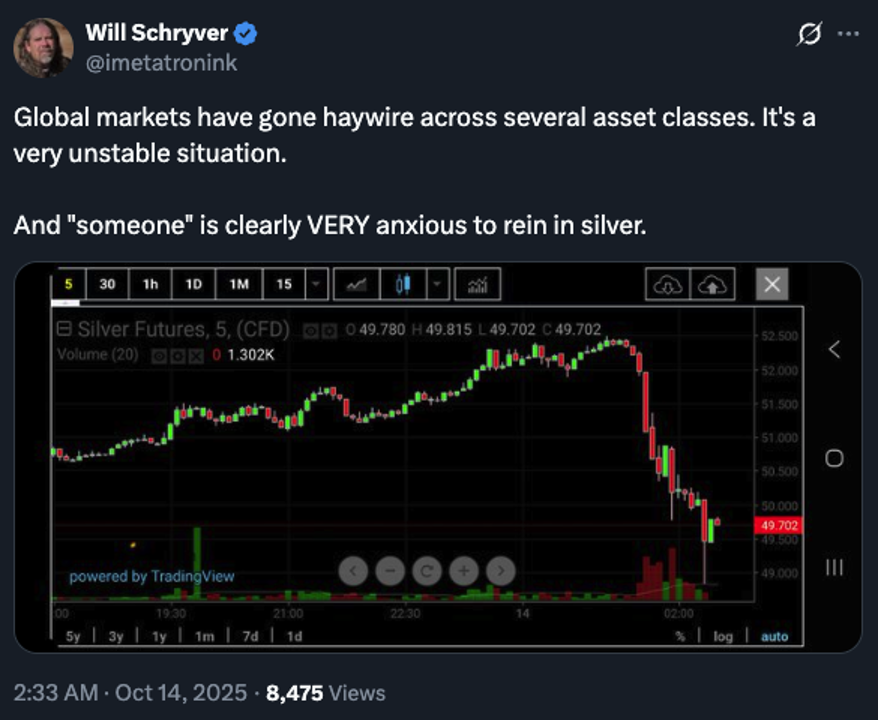
In electronic trading, the spot price of silver peaked at $53.58 shortly after midnight Eastern time — only to collapse by $3 in a matter of hours. As we write this morning, the bid has recovered to $51.35.
As noted here yesterday, silver lease rates surged late last week to more than 30%.
“Silver lease rates are typically very low, often 1–2%,” Adam Sharp writes at our sister e-letter The Daily Reckoning. “This is the cost to borrow silver in order to short it (attempt to make a profit from the price going down). But it’s not just speculators who borrow silver, of course. It’s also industrial users, miners and others who require silver for a brief period.
“Silver shorts and other borrowers have two options. They can close their position by buying to cover (at much higher prices) or roll over the short at eye-watering 30% annualized lease rates.
“This is a silver squeeze in action. Shorts are being pressed in a vise.”
That can create much short-term volatility. (See above.) But the long-term picture for silver remains strong. No amount of market manipulation can overcome the law of supply and demand at the end of the day. Even conventional financial institutions are starting to see it now: Bank of America projects $65 silver next year.
“I haven’t sold any of my silver or silver miners yet, and plan to continue to hold,” says Adam.
“The greater danger to your portfolio now is selling too early rather than holding for longer,” adds Sean Ring at The Rude Awakening.
Yes, we have things on our mind other than precious metals today. Let’s quickly move on…
![]() Meanwhile…
Meanwhile…
 The U.S. stock market has entered one of those phases where it rises and falls with each tariff headline.
The U.S. stock market has entered one of those phases where it rises and falls with each tariff headline.
Today it’s falling after Treasury Secretary Scott Bessent lit out at China — saying that Beijing’s new export controls on rare earth elements are “a sign of how weak their economy is, and they want to pull everybody else down with them.
“Maybe there is some Leninist business model where hurting your customers is a good idea, but they are the largest supplier to the world,” he tells the Financial Times. “If they want to slow down the global economy, they will be hurt the most.”
As if they don’t know that?
In any event, the major indexes are all in the red — the Dow barely, but the Nasdaq by 1%. The S&P 500 is down a half percent at 6,621.
The glum mood is dragging down even the big banks despite reporting gangbuster numbers on Day 1 of earnings season: JPMorgan Chase is down 1.9% as we write and Goldman Sachs has shed 2.7%.
Crypto is moving in sympathy with tech stocks — down. Bitcoin is now $111,268 and Ethereum has broken below $4,100.
Crude is down more than a buck again. At $58.36 a barrel of West Texas Intermediate hasn’t been this cheap since early May.
 The mood on Main Street took a turn for the worse last month, looking at the Small Business Optimism Index put out by the National Federation of Independent Business.
The mood on Main Street took a turn for the worse last month, looking at the Small Business Optimism Index put out by the National Federation of Independent Business.
The headline number dropped from 100.8 in August to 98.8 in September. Lower numbers are bad, but the index remains above its 50-plus year average.
The uncertainty portion of the index rose from 93 to 100. Here, higher numbers are bad and this is the fourth-highest reading in the survey’s five-decade history. (The other three came just before and just after Election Day 2024.)
“While most owners evaluate their own business as currently healthy, they are having to manage rising inflationary pressures, slower sales expectations and ongoing labor market challenges,” says NFIB chief economist Bill Dunkelberg.
You see it on the portion of the survey where owners are asked to identify their single-most important problem.
“Quality of labor” is tops, cited by 18%. So good help is still hard to find. But that’s tied with taxes. “Property taxes are killing us,” says the owner of an auto body shop in Illinois.
Inflation was cited by 14%, labor costs by 11% and poor sales by 10%.
 And finally… we return to precious metals as we wind down the day.
And finally… we return to precious metals as we wind down the day.
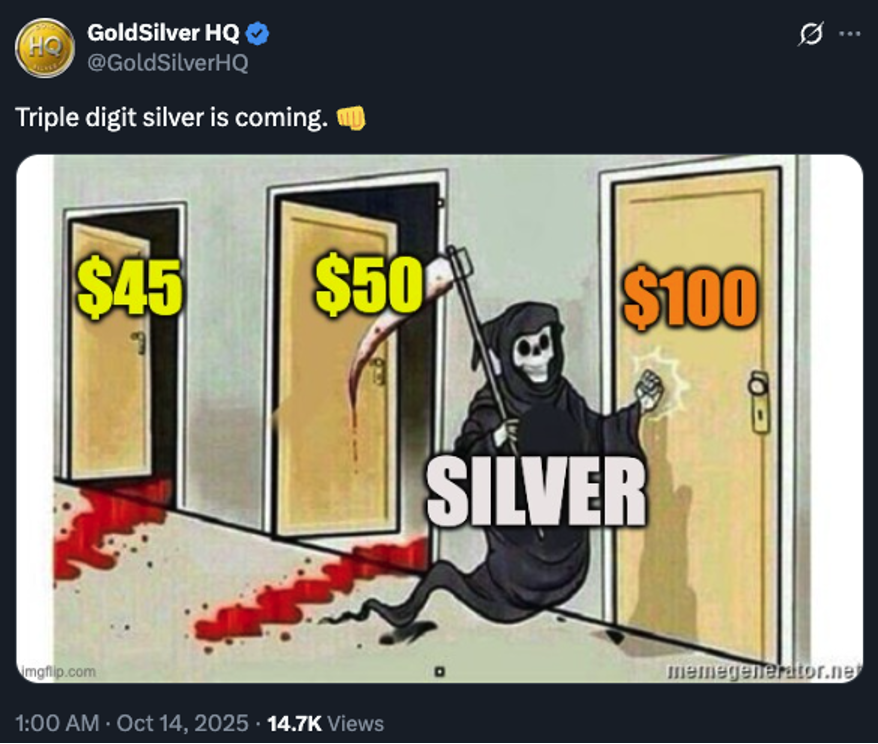
Best regards,

Dave Gonigam
Managing editor, Paradigm Pressroom's 5 Bullets

